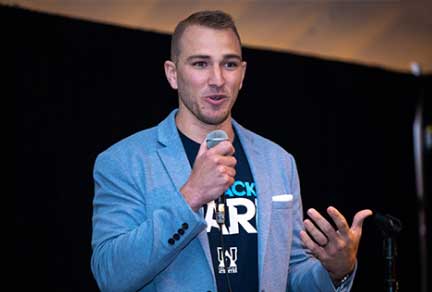Execute with precision: Streamline operations for rapid and reliable enrollment
This article is part of Parexel's "Navigating to 2030" playbook series on differentiating next-generation obesity therapies. This series offers strategic insights across trial design, regulatory considerations, clinical operations, and patient retention strategies to support sponsors in this rapidly evolving and competitive market.
Home Section 1 Section 2 Section 3 Section 4 Section 5
Trials for products to treat obesity and overweight enroll patients at an extraordinary rapid pace. These conditions are prevalent, and approved agents are often not covered by patients’ medical insurance. Since patient enrollment is not a rate-limiting factor for obesity clinical trials, sponsors must ensure that eligibility criteria are well-defined for each phase of development. Trials must recruit participants with the target disease characteristics who are representative of that population with respect to comorbidities, concomitant treatments, and other factors.
Prescreening processes must be clear and well-funded in the sites’ budgets.
Prescreening patients quickly and accurately for eligibility in obesity trials can be complex. For example, depression and anxiety are common comorbidities of obesity; if a trial protocol does not contain a precise definition of an exclusion criterion such as major depressive disorder (MDD), site staff may waste time determining whether patients with mild depression or anxiety are eligible. We have found in cases like this that a list of antidepressants that indicate an MDD diagnosis can prevent protocol deviations and save time. Mental health prescreening also requires specialized training for site staff to administer questionnaires that assess patients’ depression, well-being, and self-esteem using validated scores and scales. These are critical because patients with a history of depression or suicidality are excluded from GLP-1 clinical trials to avoid unnecessary risks.1
At Parexel, we have worked on trials that exclude dozens of concomitant medications, requiring a detailed review of medical records to ensure patients taking prohibited drugs are not enrolled. This type of exclusion is often due to a lack of non-clinical and clinical drug-drug interaction (DDI) studies of the investigational drug with the drugs that patients are anticipated to take. Excluding trial participants who take certain concomitant medications can be time-consuming and expensive—requiring study coordinators and nurses to have high-level expertise.
While a post-randomization eligibility review of all patients may be performed to confirm correct enrollment, a more effective solution may be to provide financial and material support for prescreening. We recently conducted a large Phase II trial for the sponsor of a new treatment for obesity and diabetes. By including funding for prescreening activities in site budgets, we achieved rapid enrollment with a low screen failure rate and completed the obesity arm two months ahead of schedule.
Protocol amendments may not be feasible, so up-front protocol optimization is vital.
Rapid enrollment poses unique operational challenges to sites, sponsors, and contract research organizations (CROs). In a slow-enrolling cancer or rare disease trial, amendments to optimize the protocol can often be implemented once the trial is underway. But in a fast-enrolling obesity trial, all protocol amendments ideally should be implemented before the first patient in (FPI). That’s because there is often not enough time to implement an amendment, which can involve revising case report forms and informed consent documents, then securing approval from sites’ Institutional Review Boards (IRBs) and Ethics Committees (ECs), before enrollment in the trial is complete.
At Parexel, we ensure that our in-house regulatory experts, clinicians, and patient advocates review and optimize protocols before they are finalized and submitted to IRBs.
A gated start-up strategy can enable controlled acceleration.
At Parexel, one way we control acceleration in fast-enrolling trials is to select 5-10 sites for rapid and focused trial start-up while more gradually ramping up the remaining sites in increments of 5-10. We tailor contract and budget processes to individual sites. Sites may need bespoke recruitment budgets depending on where they are located or for specific enrollment requirements and limits by gender, race, or ethnicity. For example, many obesity trials seek to enroll more male patients. Site-specific kickoff meetings are vital to operational excellence in rapid start-ups. Our clinical research associates (CRAs), clinical operations lead, and medical monitor conduct mock site initiation visits and kickoff meetings to ensure they are prepared.
Resources
- GLP-1 Receptor Agonists and Suicidality—Caution is Needed, Psychiatry (August 20, 2024).
Sign up for our webinar "Unlocking Success in Obesity Clinical Trials: Mastering Patient Engagement and Retention." Do not miss this opportunity to take a meaningful step toward smarter, more successful obesity trials.
Related Insights
Webinar
Unlocking Success in Obesity Clinical Trials: Mastering Patient Engagement and Retention
May 15, 2025
Whitepaper
Navigating to 2030: A playbook for differentiating next-generation obesity therapies
May 2, 2025
Whitepaper
Optimize trial retention: Targeted strategies to engage patients
May 1, 2025
Whitepaper
Anticipate regulatory expectations: Fill evidence gaps and mitigate risks
May 1, 2025
Whitepaper
Design for efficiency: Employ trial strategies to meet stakeholder needs
May 1, 2025
Playbook
Define your differentiators: Carve a unique niche in the market
May 1, 2025
Article
Key strategies to mitigate the risks of asthma drug development
Jan 24, 2025
Blog
Updated European Society of Cardiology guidelines: opportunities and risks for clinical trials
Jan 21, 2025
Podcast
Enabling Successful Sites, Episode 2: Empowering Sites to be More Inclusive Through Cultural Sensitivity Training
Jun 28, 2024
Blog
AI Milestones: AI-enabled EKG reads and alerts save lives: human-AI collaboration in practice
Jun 6, 2024
Related Insights
Webinar
Unlocking Success in Obesity Clinical Trials: Mastering Patient Engagement and Retention
May 15, 2025
Whitepaper
Navigating to 2030: A playbook for differentiating next-generation obesity therapies
May 2, 2025
Whitepaper
Optimize trial retention: Targeted strategies to engage patients
May 1, 2025
Whitepaper
Anticipate regulatory expectations: Fill evidence gaps and mitigate risks
May 1, 2025
Whitepaper
Design for efficiency: Employ trial strategies to meet stakeholder needs
May 1, 2025
Playbook
Define your differentiators: Carve a unique niche in the market
May 1, 2025
Article
Key strategies to mitigate the risks of asthma drug development
Jan 24, 2025
Blog
Updated European Society of Cardiology guidelines: opportunities and risks for clinical trials
Jan 21, 2025
Podcast
Enabling Successful Sites, Episode 2: Empowering Sites to be More Inclusive Through Cultural Sensitivity Training
Jun 28, 2024
Blog
AI Milestones: AI-enabled EKG reads and alerts save lives: human-AI collaboration in practice
Jun 6, 2024



